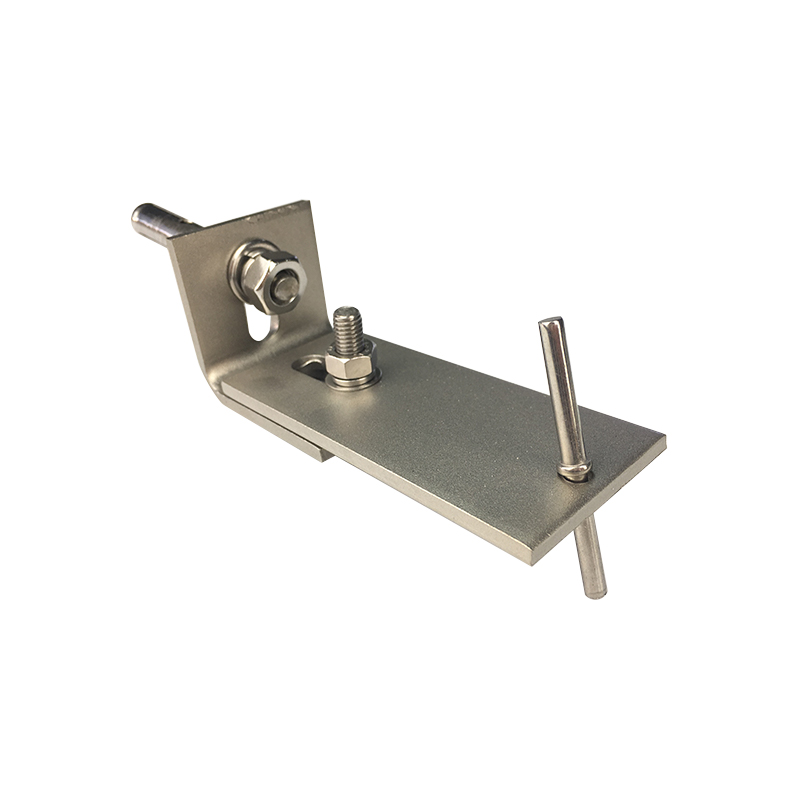-
 Tel:
Tel:+86-15996094444
-
 E-mail:
E-mail:rose@aozjs.com
INQUIRE NOW

+86-15996094444

rose@aozjs.com
INQUIRE NOW
When designing stainless steel cladding brackets, choosing the appropriate size and load-bearing capacity requires comprehensive consideration of multiple factors such as building structure characteristics, the properties of cladding materials, and the use environment. The following are detailed design ideas and steps:

Stainless Steel Adjustable L Angle
1. Clarify design goals and use requirements
Building type and use: Different building types (such as residential, commercial buildings, industrial plants, etc.) have different requirements for the load-bearing capacity of cladding brackets. For example, industrial plants may require higher load-bearing capacity to cope with the installation of heavy equipment or materials.
Weight and type of cladding material: The type and thickness of cladding materials (such as stone, glass curtain wall, metal plate, etc.) directly affect the load-bearing requirements of the bracket. For example, stone cladding is usually heavier than glass cladding and requires a higher load-bearing capacity.
Use environment: Environmental factors (such as wind load, seismic load, temperature change, etc.) will also affect the design of the bracket. Coastal areas or high-rise buildings may need to consider higher wind loads.
2. Determine the weight and distribution of the cladding material
Calculate the weight of the cladding material: Calculate the weight per unit area based on the area, thickness and density of the cladding material. For example, the weight of stone cladding is usually 20-30 kg/m², while the weight of glass curtain wall is about 30-50 kg/m².
Consider the distribution of the cladding: Whether the cladding material is evenly distributed will also affect the force of the bracket. If the cladding material is unevenly distributed, it may be necessary to increase the bearing capacity of the bracket in local areas.
3. Analyze the mechanical properties of the building structure
Main building structure type: The building structure type (such as frame structure, shear wall structure, etc.) will affect the connection method and force characteristics of the bracket. For example, in a frame structure, the bracket may need to be connected to the beam or column through a connector.
Connection method: Determine the connection method between the bracket and the main building structure (such as welding, bolt connection, etc.), and calculate the bearing capacity of the connection point. The strength of the connection point should match the overall bearing capacity of the bracket.
4. Consider external loads and safety factors
External loads: In addition to the deadweight of the cladding material, other external loads such as wind loads, snow loads, earthquake loads, etc. need to be considered. According to the meteorological and geological conditions of the building location, the corresponding load standards are determined.
Safety factor: In order to ensure the safety of the bracket, a safety factor needs to be introduced during design. Usually, the safety factor ranges from 1.5 to 2.0, and the specific value is determined according to the design specifications and usage requirements.
5. Choose the right bracket size and material
Material selection: The strength and corrosion resistance of stainless steel materials are key factors. Common stainless steel materials include 304, 316, etc. Among them, 316 stainless steel has better corrosion resistance and is suitable for coastal or humid environments.
Size selection: According to the calculated load-bearing capacity and safety factor, select the appropriate bracket size. For example, the cross-sectional dimensions of the bracket (such as the side length of the square tube, the diameter of the round tube, etc.) should be determined according to the force conditions. The length and spacing of the bracket will also affect its load-bearing capacity.
6. Perform structural analysis and verification
Finite element analysis: Use finite element analysis software (such as ANSYS, ABAQUS, etc.) to model and analyze the bracket to verify its stress distribution and deformation under various loads.
Experimental verification: If conditions permit, experimental methods can be used to verify whether the design of the bracket meets the requirements. For example, tensile tests, bending tests, etc. are performed to ensure that the actual load-bearing capacity of the bracket is consistent with the design value.
Contact Us